- Our products and services are backed up by best-in-class data from publicly available data and proprietary sources. We then add value to this data through our in-house models.
- We focus on modeling generation at the hourly level to capture the diurnal and seasonal patterns of solar and wind generation.
- Our price prediction system is designed to account for the relationships between weather, generation, market fundamentals, and price to accurately model revenue.
Generation & Price Modeling
Our generation modeling methodology captures the impact of a variety of elements on generation patterns. We start with long-term modeled weather data from third-party sources. We then improve upon those datasets by combining them with proprietary observations and in-house models. Multiple data sources and models are combined to form an ensemble that captures a large range of potential weather outcomes.
Our price modeling system uses machine learning to add various power pricing scenarios and weather conditions to forward power market curves. Other inputs like renewable penetration in the grid, energy demand, and gas prices are layered into the model to inform forecasts.
Shape Modeling
With generation and price modeling, we can determine the likely shape of a project. Shape describes the value of a project’s wind or solar generation relative to the average price of power, taking into account the relationship between when the project is producing and whether prices are usually high or low during that time. Shape is impacted by seasonal and diurnal correlations between generation and price, hourly market conditions, and the rate of renewable energy penetration in the market.
Our Team of Experts
REsurety’s products and services are made possible through our in-house expertise, including meteorologists, renewable energy and power market experts, software engineers, and more in accelerating the world’s transition to a zero-carbon future. Read our white papers, reports, and more for insights and analysis regarding renewable energy markets.
3 Ways to Maximize the Effectiveness of Your Renewable Energy PPAs
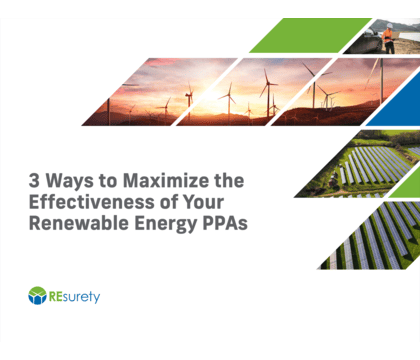
A playbook by REsurety, published by Utility Dive To help meet their sustainability goals, more and more companies are signing clean energy power purchase agreements (PPAs). While long-term contracts such as PPAs can help companies hedge price risk in the long term, they may also result in significant short-term losses if not designed and monitored… Read more »
Carbon Impact of Intra-Regional Transmission Congestion
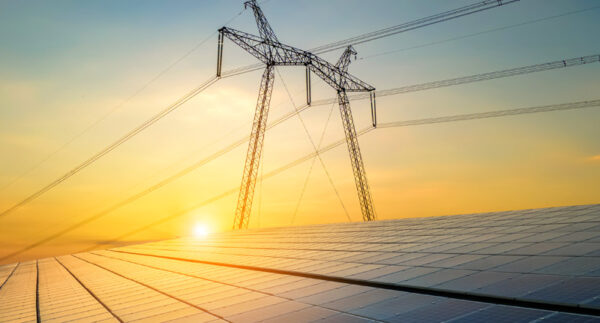
Derived from the scientific paper: Carbon Impact of Intra-Regional Transmission Congestion, which received unanimous support from the ZEROgrid Independent Advisory Initiative advisors (MIT Energy Initiative, Princeton, WattTime, and REsurety). To access the study, please scan the QR code. Overview The emissions intensity of electricity can vary greatly within grid regions at any given time due… Read more »
Paper: Validating Locational Marginal Emissions Models with Wind Generation

This paper, authored by Nat Steinsultz, Pierre Christian, Joel Cofield, Gavin McCormick, and Sarah Sofia was published by IOP Science in Environmental Research: Energy, Volume 1. You can find the full paper here, or download a PDF version by clicking the button below. Abstract Increasingly large amounts of electric supply and load are being deliberately… Read more »
Policy Brief: Assessing the Impact of Voluntary Actions on the Grid
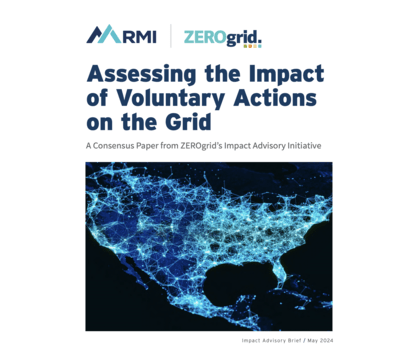
A Consensus Paper from ZEROgrid’s Impact Advisory Initiative, published by RMI and ZEROgrid Executive Summary Over the past 10 years, voluntary procurement of clean energy by corporations has been a tremendous driver of renewable energy development. Since 2014, large companies have signed procurement contracts supporting the development of over 70 gigawatts of renewable energy in… Read more »
White Paper: Charging Towards Zero
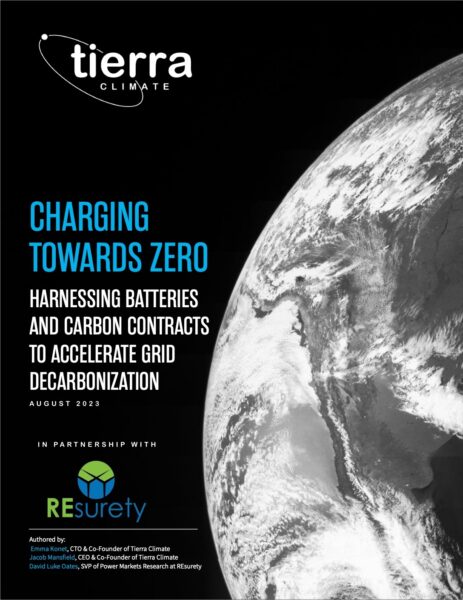
Harnessing Batteries and Carbon Contracts to Accelerate Grid Decarbonization, authored by Tierra Climate in partnership with REsurety This paper examines the economic carbon impact of compensating batteries for carbon reduction using detailed electricity emissions data and a carbon contract. Carbon contracts with grid-scale batteries might provide corporations with an elegant solution to meet sustainability targets… Read more »
White Paper: Emissions Implications for Clean Hydrogen Accounting Methods
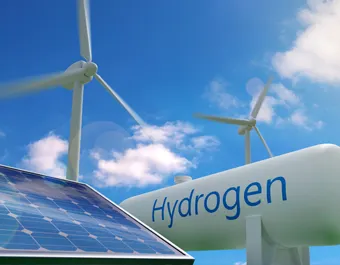
Authored by Carl Ostridge and Devon Lukas Executive Summary REsurety uses Locational Marginal Emissions (LMEs) data to analyze the effectiveness of the three carbon accounting methods proposed for compliance with new production tax credits available for clean hydrogen under the Inflation Reduction Act (IRA). This analysis considers 32 electrolyzer-renewable project pairs across 3 different grid… Read more »
White Paper: Paths to Carbon Neutrality

A Comparison of Strategies for Tackling Corporate Scope II Carbon Emissions, published by Tabors Caramanis Rudkevich The purpose of this paper is to provide a comprehensive, comparative study covering a variety of factors impacting the cost and implementation of corporate clean energy procurement strategies. Read the excerpt below to learn more. Global climate change has… Read more »
White Paper: Carbon Confidence in Climate Finance, as published by HASI
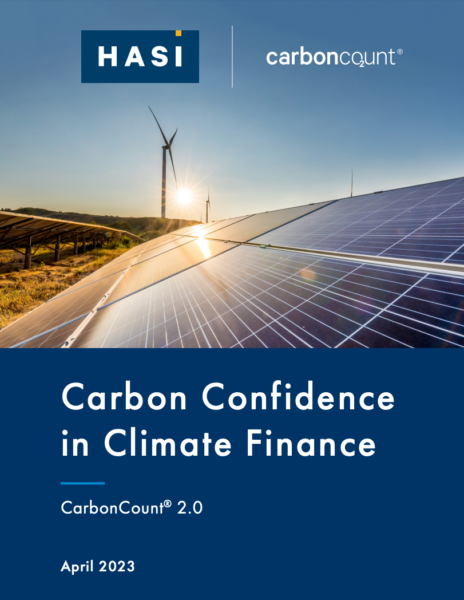
“LME is an important tool in assessing individual projects because seemingly identical renewable energy projects can have drastically different impacts on avoided carbon emissions.” CarbonCount is a decision tool that evaluates investments in U.S.-based renewable energy, energy efficiency, and climate resilience projects to determine how efficiently they reduce CO2 equivalent (CO2e) emissions per $1,000 of… Read more »
White Paper: Making It Count
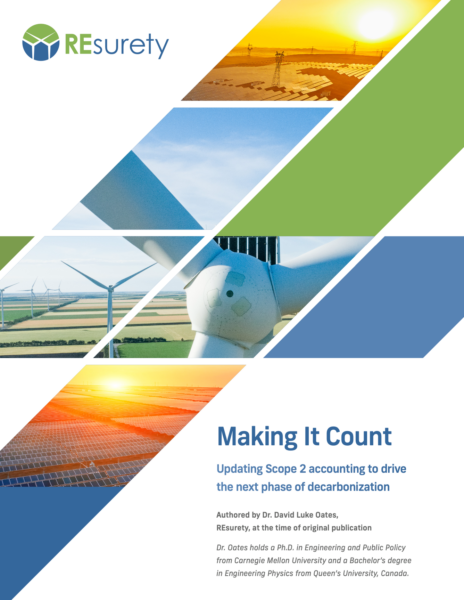
Updating Scope 2 accounting to drive the next phase of decarbonization EXCERPT: Corporations are increasingly focused on reducing their carbon footprints by decarbonizing the electric grid. While solar and wind energy development have rightly been a mainstay of these efforts, there is growing consensus that producing more clean energy alone isn’t enough. To maximize grid… Read more »
Friends Don’t Let Friends Use 8760s …at least not for revenue modeling
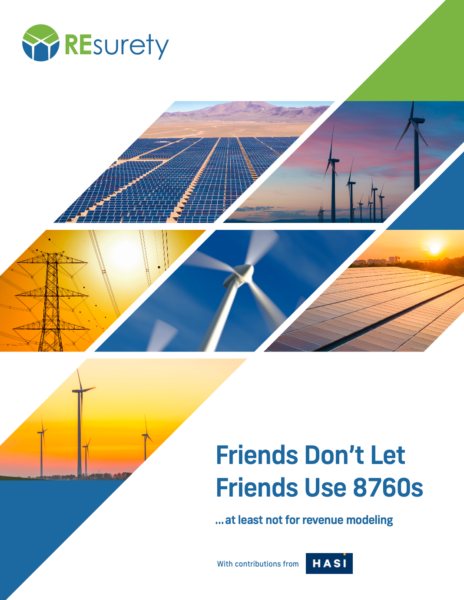
Authored by Jennifer Newman, Vice President of Atmospheric Science Research, REsurety White Paper Executive Summary An “8760” (sometimes known as a “typical meteorological year,” or “TMY”) is a year-long hourly time series of expected generation for a wind or solar project. As the name implies, an 8760 contains generation values for all 8,760 hours of… Read more »
White paper: Locational Marginal Emissions

A Force Multiplier for the Carbon Impact of Clean Energy Programs EXCERPT: While the impressive growth in clean energy development is an encouraging signal that we can tackle the harms of greenhouse gases and climate change, we should remember that clean energy deployment itself is not the ultimate goal. Tracking environmental goals in traditional units… Read more »
Risk Mitigation for Corporate Renewable PPAs
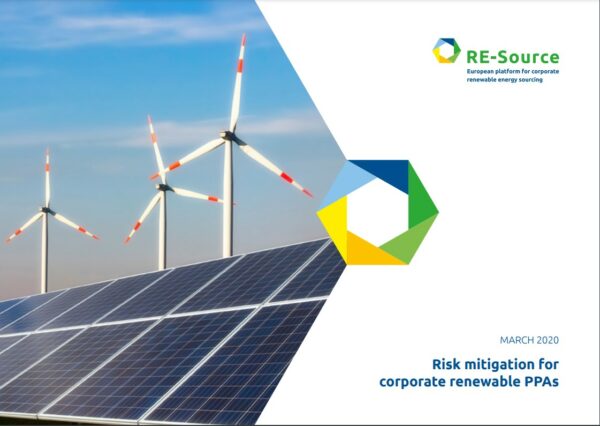
REsurety contributes a chapter on how to manage risk in virtual PPAs through Volume Firming Agreements in this new report by RE-Source, a joint platform of WindEurope, SolarPower Europe, the RE100, and the World Business Council for Sustainable Development. EXCERPT: Corporates have a variety of different drivers for looking to source power from renewables, but the… Read more »
Accounting Primer for C&I Renewable Energy Buyers
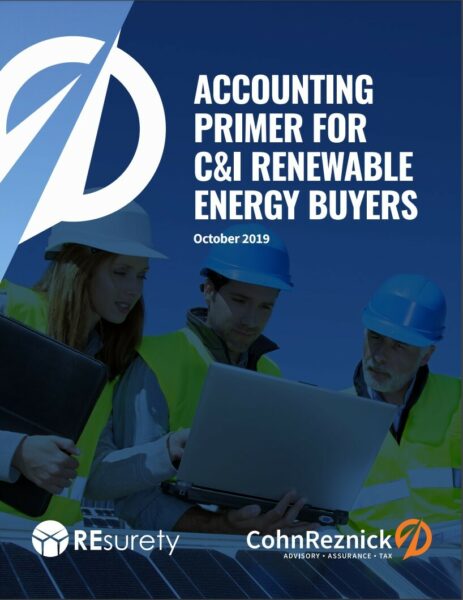
For C&I Buyers looking to mitigate risks in their PPAs, CohnReznick provides new accounting guidance on Volume Firming Agreements and Settlement Guarantee Agreements in a whitepaper co-published with REsurety. EXCERPT An important consideration for Buyers is how these contracts, or group of contracts, will be assessed for accounting purposes. Like a traditional vPPA, contracts like… Read more »

